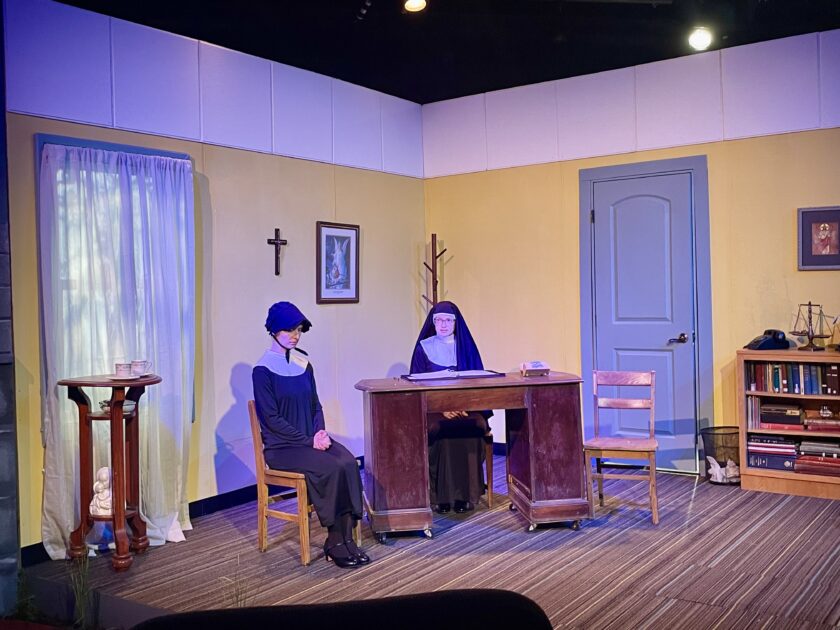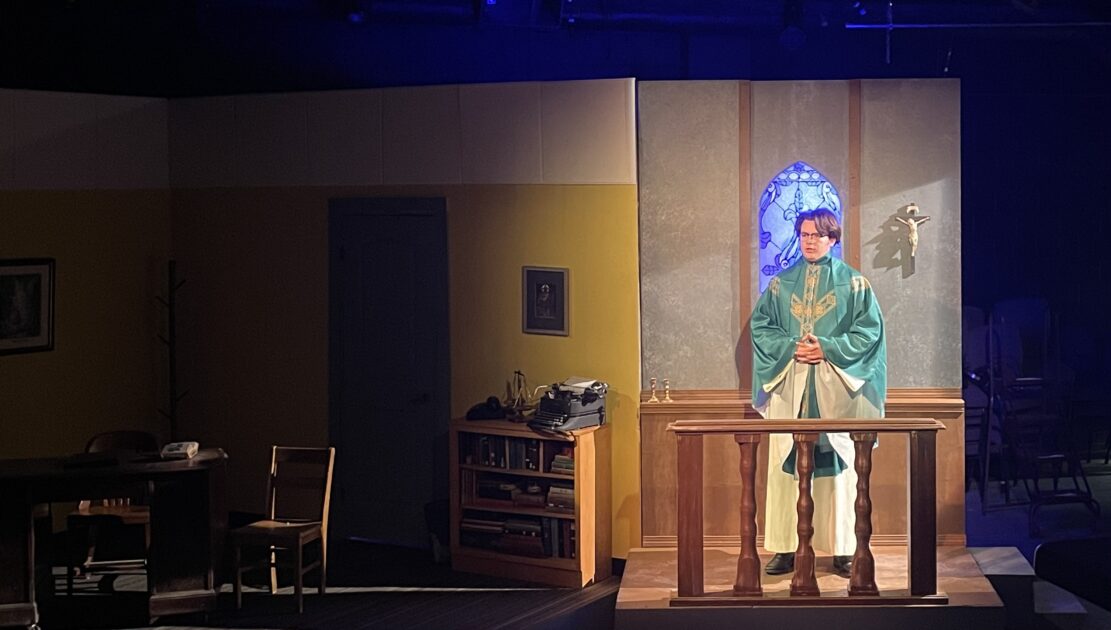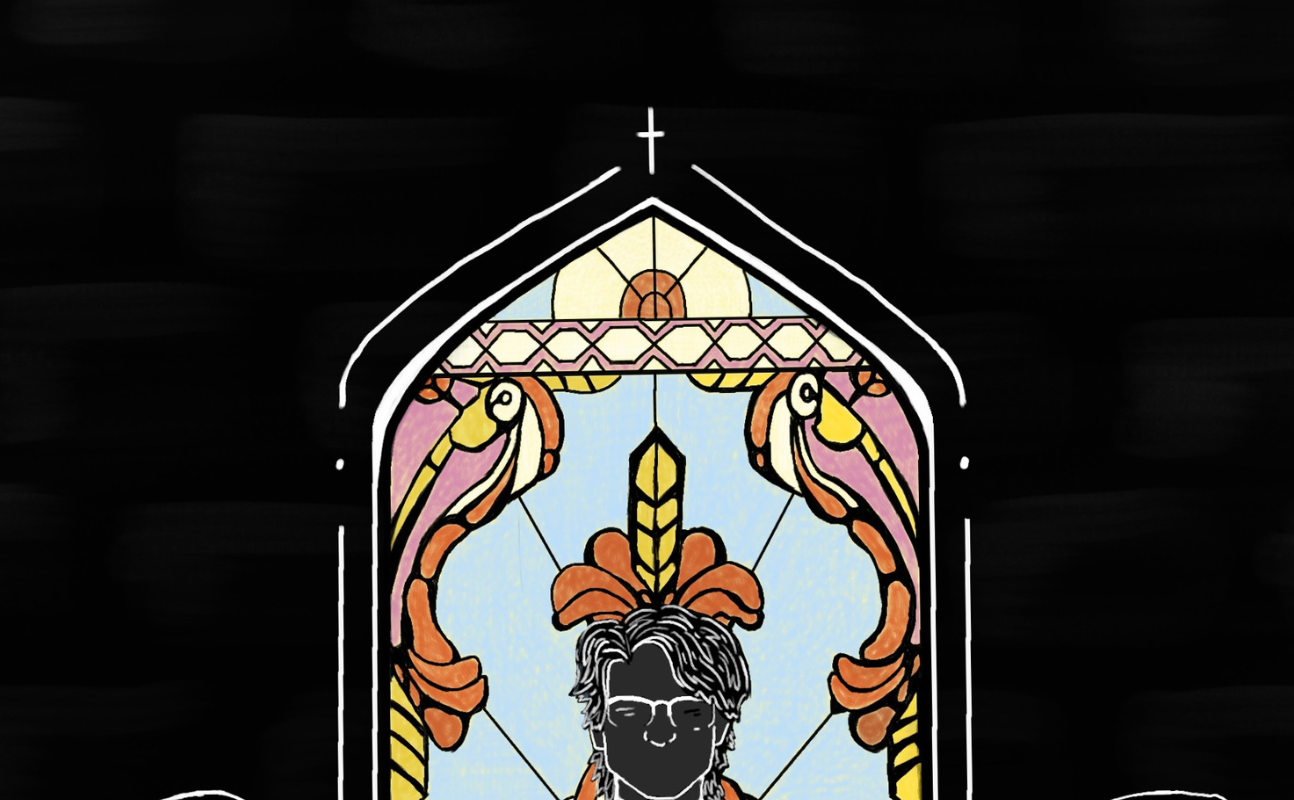This past week, the appropriately named “Doubt: A Parable,” written by John Patrick Shanley, had a run in the Cabaret Theatre on the university’s campus.

Set during a crucial period of time for the Catholic Church, “Doubt: A Parable” follows the staff members of St. Nicholas Church School. The recent addition of the only black student in the school, Donald Muller, has become a topic of conversation, and as the story progresses, theories and rumors begin to circulate.
Each rumor plants a seed of doubt that keeps the audience wondering who to trust, what is true and who to blame.
People who went into the play expecting the usual comedic plays the Cabaret Theatre has become accustomed to quickly realized that is not the case. During a backstage interview with the cast, Clay Reher, who plays Father Flynn, further elaborates on the topic.
“It’s definitely a show that challenges the norm of what this theater has performed over the last two years,” said Reher, “…the last show that was really this level of intensity was “The Laramie Project,” which I wasn’t even here for yet.”
With a cast of only four students, the play entirely depended on the tension and conflict between its characters in every scene. This tension is impactful as the audience, along with the characters, try to decide who to side with.
The audience must choose to side with Father Flynn, who claims to be looking out for Donald as the only black student, or Sister Aloysius, played by Laura Wallace, who believes that Father Flynn has used Donald’s outcast label as a tool to hide his sexual abuse of the boy.
Sister James, played by Madison Breyley, acted as comedic relief before the play dove further into these more serious subjects. As she was presented with new information and viewpoints, she changed who she sided with and her stance on certain events, just as the audience is intended to do as well.

Besides its ability to instill the feeling of doubt in the audience, the play’s greatest aspect was the mystery that accompanied the doubt. The show did the opposite of show don’t tell, by not showing any of the events that were debated on stage. Even Donald, the focal character, is discussed in almost every scene of the play, but he never appears on stage for the audience to see.
Mrs. Muller, played by Michelle Costell, is the closest the audience and its characters come to getting insight into Muller’s side of the story. However, it becomes clear Mrs. Muller, like everyone else in the play, does not know anything about what has happened. The only difference is Mrs. Muller provided a nuanced stance on the situation by simply deciding to stay blissfully ignorant about it.
The entrance of Mrs. Muller was the first time the audience was exposed to viewpoints beyond the prior three characters introduced in the play. By taking a rather centralized stance on the issue, the audience continues to be left with no answer just before the climax and highlight of the play, which is the final confrontation between Father Flynn and Sister Aloysius.
When Sister Aloysius and Sister James walk off stage after their final scene, the audience is left with no answers, only their own assumptions and doubts.
While the play was a smaller production, with only four actors in the crew, the play had no issue feeling like a bigger production. The crew and the actors were instantly able to transport the audience into this fictional world being produced on the stage.
Though the audience never gets the conclusion to the internal conflict present in the play, the incredible acting performances from all four performers leave the audience feeling more than fulfilled.
The topics being discussed may have been dark, but the love and attention to detail put into the play and its story were felt throughout the entire production.
Most of the production crew and cast were seniors with this being one of the last shows they are able to participate in at the university.

